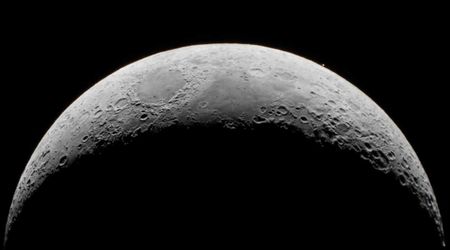NASA observes peculiar red glowing formation floating on Saturn's biggest moon

Despite our solar system's hosting eight official planets, NASA's primary focus remains on Mars and the gas giants, such as Jupiter and Saturn. Significant discoveries regarding these celestial bodies have been achieved through observation alone, largely due to the formidable challenges associated with direct exploration. Jupiter's intense atmospheric conditions, characterized by extreme heat and pressure, would swiftly incapacitate any spacecraft attempting entry. Similarly, Saturn presents an insurmountable obstacle with its lack of solid surface; the planet's powerful environment would consume any probe or rover, per The Pulse.
Why would clouds on Saturn’s moon Titan be visible in some pics, but not others? These @CassiniSaturn views tell us: https://t.co/kzKiCn3HGP pic.twitter.com/ZYXhu91R8K
— NASA (@NASA) December 22, 2016
Beyond Mars, NASA extends its research to other planets within our solar system. Like Earth, nearly every planet boasts its natural satellites. However, unlike our moon's influence on Earth's tides, these distant moons don't affect their host planets in the same way, primarily due to the absence of oceans. Many of these satellites were gravitationally captured during the solar nebula event, a pivotal period that reshaped our solar system. Direct physical exploration of many planets is currently unfeasible due to the lack of breathable oxygen in space, the immense distance, and limitations in spacecraft propulsion technology. Instead, NASA relies on advanced space telescopes such as the Chandra X-Ray, Spitzer, and James Webb to make continuous discoveries remotely.
Evaporation, condensation, precipitation on my mind. This is the (methane?!) cycle, and it happens all the time! 🎶
— NASA Webb Telescope (@NASAWebb) May 14, 2025
Webb provided evidence for cloud convection on Saturn’s moon Titan, the only other place in our solar system with weather like Earth! https://t.co/oRYXRySqM0 pic.twitter.com/s8nu9URPFa
In a significant discovery, astronomers with NASA have recently observed cloud convection in the Northern Hemisphere of Titan, Saturn's largest moon. Utilizing powerful instruments, including the Keck Observatory in Hawaii and the orbiting James Webb Space Telescope, this marks the first time such atmospheric activity has been detected in this region of Titan. Titan stands as a unique celestial body within our solar system. It is characterized by a dense, yellowish atmosphere, predominantly composed of nitrogen, mirroring Earth's atmospheric makeup in its composition. The moon also exhibits a dynamic weather system, complete with clouds and precipitation. However, unlike Earth's water cycle, Titan's weather is driven by methane, a gas that can condense into liquid in its frigid environment.

The recent observations, conducted by NASA in late 2022 and mid-2023, revealed the presence of clouds in Titan's northern region. Crucially, these clouds were seen ascending to higher altitudes within the atmosphere, indicating ongoing convection. While cloud convection has previously been documented in Titan's southern hemisphere, its detection in the north is particularly noteworthy. This is significant because the majority of Titan's extensive lakes and seas are concentrated in the Northern Hemisphere, suggesting that evaporated methane from these bodies may play a role in the formation of these observed clouds.
Titan: a strange world with seas of methane and ethane. Scientists are using @NASAWebb to take a close look—and developing Dragonfly, a mission to send an octocopter to Saturn’s largest moon.
— NASA (@NASA) August 23, 2024
Watch “Other Worlds” on our ad-free streaming service NASA+: https://t.co/3RSXPJjhCI pic.twitter.com/OxkWIP595t
Titan's atmosphere exhibits a notable difference in scale compared to Earth's. While Earth's troposphere, its lowest atmospheric layer, extends approximately 12 kilometers, Titan's corresponding layer reaches an impressive 45 kilometers due to its weaker gravitational pull. By employing various infrared filters, scientists were able to gauge the depth of these clouds and observed their ascent to higher altitudes over a period of several days. Although no direct precipitation was recorded, the observed cloud movement itself provides valuable insights into Titan's complex weather patterns, as mentioned by the outlet.
This crucial NASA research was conducted as part of "The Twilight Zone" program, an initiative that enables scientists to observe bright celestial objects even during periods of high ambient light, when traditional astronomical observations are challenging. Titan has emerged as one of the most compelling locations for studying the potential for organic life. This is primarily because it harbors complex organic molecules, the very same carbon-based molecules that form the building blocks of life on Earth. By investigating how these molecules form and behave on Titan, scientists aim to gain a deeper understanding of the origins of life on our own planet.









